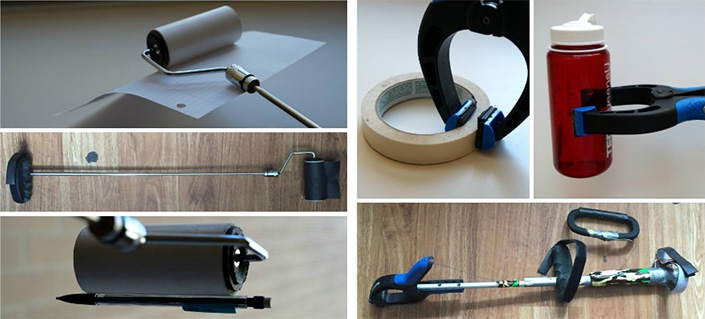Object Grip
The Tetra Society of North America is an organization with regional chapters located all over Canada and the United States. The mandate of the organization is to provide custom assistive devices to persons with physical disabilities to help them perform daily tasks despite their limitations. Teams of Tetra members typically tackle engineering problems from design to implementation, fully considering all aspects of problems involved including mechanics, ergonomics, assembly, etc.
The client, Mr. Neil Allen, suffered a spinal injury that resulted in paraplegia when he was 17. The injury confined Mr. Allen to a wheelchair and limited his fine motor control. A team of first year Queen’s engineering students, employed by the Tetra Society of North America, designed a customized assistive device that allows Mr. Allen to perform tasks such as picking up keys or a sheet of paper with ease.
One of the three teams responsible for helping Mr. Allen incorporated aspects of each of their three possible design solutions in order to create a device that was optimized to meet the needs of their client. The final design was a gripping apparatus with four separate extensions: a large hook for heavy objects (e.g. briefcases, grocery bags), a small hook on a telescopic arm for lighter objects (e.g. keys, flicking light switches), a lint roller on a telescopic arm for light objects that cannot be reached with a hook (e.g. sheets of paper, coins), and a clamp for medium-sized objects (e.g. pop cans, pens). The final design was a compromise of simplicity and functionality and their prototype can be seen below. Throughout the design process, the students communicated with Mr. Allen in order to ensure their design would satisfy the needs of their client. As a result of the project, the students learned valuable skills such as communication, teamwork, and professional client interaction.
The students were recently featured in the Kingston Whig, a local community newspaper. Mr. Allen was quoted with saying
“…it was a good experience for me because I came out of it with some devices that are going to make my life a little easier.”
The full article can be found here.


